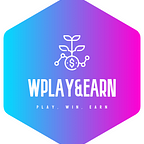The Paradigm Shift from the Centralized Era of Web2 to Web3
A Four Principle Guide for the Reshaping of Digital Realm
The internet has evolved through various eras, from static websites of Web1 to interactive and collaborative platforms of Web2. Web1 was characterized by static websites that presented information to users. Web2, on the other hand, transformed the internet into an interactive, collaborative space, spawning social media and tech behemoths such as Google and Facebook. This transformation, however, was not without its drawbacks.
Web2 enabled unprecedented economic growth and global connectivity, but it also commodified user data, raising privacy and exploitation concerns. Users’ information was monetized by centralized platforms, leaving individuals with little control over their own digital presence.
However, with the introduction of Web3, a fundamental paradigm shift is underway, transforming internet users into internet owners. Through the use of blockchain technology, individuals gain control and ownership over their data, assets, and digital identity in this new era.
Web3 attempts to address the shortcomings of Web2. By empowering individuals to own and manage their data, content, and creative works, Web3’s core principles of ownership, commerce, identity, and governance promise to restore user control and usher in a more equitable, user-centric, and open Internet.
Commerce: Redefining Transactions and Business Models
Blockchain is a cornerstone of Web3 as a medium for value transfer and storage. It has the potential to transform business models in a variety of industries. Decentralized Finance (DeFi) is a prime example of this transformation in the financial sector. DeFi transforms lending, trading, and funding by allowing users to build digital credit scores and gain access to financial services. Furthermore, stablecoins, digital assets pegged to fiat currencies, facilitate large-scale blockchain transactions involving trillions of dollars.
However, Web3 goes beyond finance by encouraging users to be active participants in the digital economy. Users can now use their tokens to gain access to a variety of services and benefits, democratizing access to a diverse range of offerings. This new model, which is similar to the Silicon Valley principle of sharing the upside to attract talent, is being implemented globally, allowing anyone who uses Web3 applications to share in the potential benefits. On Ethereum, creators have earned more than 1.8 billion dollars in royalties.
Governance: Inclusivity and Decision-making
In the Web2 era, corporations held considerable sway over the digital landscape. All the important decisions concerning the users were made by the big corporations, without any active participation of the users. Web3, however, decentralizes decision-making through a governance model that includes the community of token holders.
Token holders have a say in platform governance, ensuring a more inclusive and democratic process. This inclusion cultivates a sense of ownership and responsibility among users, fostering a collaborative environment where decisions are made with the interests of the community at heart.
Ownership: Reclaiming Digital Control
Web1 and Web2 saw the rise of the internet as a platform for sharing information and creating valuable digital commodities. However, users were mere tenants, lacking control or ownership over their digital presence. Data, the currency of the digital realm, became a valuable commodity, but individuals had little say in its usage or ownership. Data aggregators and tech giants monetized user information, raising concerns about privacy and exploitation.
Web3 brought a new dawn, enabling individuals to reclaim ownership of their data through the innovative use of blockchain technology. Much like a traditional wallet holds money and assets, a digital wallet in Web3 holds a person’s unique identifiers and valuable data. Tokens, digital assets on the blockchain, act as containers for value, representing ownership in various aspects of life, including money, stocks, art, collectibles, data, and natural assets. These tokens grant users ownership stakes in products and services, aligning their interests with the platforms they use and providing them with a voice in governance decisions.
Identity: Privacy and Empowerment
Privacy and identity management are fundamental aspects of Web3. As users gain control over their data, they can manage their digital identities more securely and privately. The blockchain’s decentralized nature ensures enhanced privacy, minimizing reliance on centralized entities and the risk of data breaches.
Through Web3, individuals are empowered to manage and safeguard their data, allowing them to selectively share it with trusted entities. This elevation of privacy turns into enhanced security and control over one’s digital identity, a critical step toward a more user-centric internet.
Do you want to know more about the Web3 gaming industry? Then check out our News, Games, X, and YouTube.
